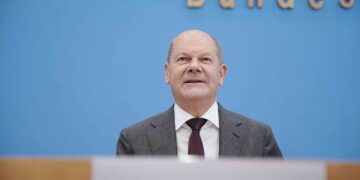Ashleigh Bartys French Open victory in Roland Garros was one of those extraordinary moments that made the nation smile and proud.
At 23 years old, 166cm, this pocket rocket from Ipswich Queensland and a great-granddaughter of the Ngaragu people from southern NSW and north-eastern Victoria, has won her first tennis grand slam – following in the footsteps of another Indigenous female trailblazer Evonne Goolagong Cawley.
One of the most impressive things about Barty is how, throughout her rise and rise, she has managed to keep her feet planted firmly on the ground.
I have also had the great pleasure to have met her parents who were wonderful, humble and grounded.
Advertisement
In a high-pressured environment, she has pursued sporting excellence with a grace and quiet dignity.
Barty has a sense and awareness of herself, beyond herself – as being a part of a broader community.
Community and family are fundamental to the Indigenous world view.
And Barty has stated the importance of her Indigenous heritage to her identity, and she is proudly Australian.
Among what I can only imagine to be a gruelling training schedule, she and her sisters have taken the time to learn more about her clan and culture.
But more than that, and despite being now a household name, she has also been generous with her time supporting the next generation of Australias tennis players.

Linda Burney, at her office in Kogarah. Credit:Dominic Lorrimer
Last year, she was named National Indigenous Tennis Ambassador by Tennis Australia, in an effort to promote tennis among young Indigenous Australians. Part of the program introduces tennis to more than 1,000 children in remote parts of the Northern Territory.
Achievements on the sporting field remain a major part of First Nations identity in modern Australia.
For all the challenges that confront Indigenous Australians, our Indigenous athletes provide strong role models for our youth, strengthening identity and Aboriginality, and a sense of place and belonging.
And it is not so much about the physical athleticism itself, as it is about what those sporting achievements represent and the valuable lessons they have for our young people in fields beyond sport: discipline, persistence, unity, strength and dignity.
 _
_
Australian Breaking News Headlines
Ashleigh Bartys French Open victory in Roland Garros was one of those extraordinary moments that made the nation smile and proud.
At 23 years old, 166cm, this pocket rocket from Ipswich Queensland and a great-granddaughter of the Ngaragu people from southern NSW and north-eastern Victoria, has won her first tennis grand slam – following in the footsteps of another Indigenous female trailblazer Evonne Goolagong Cawley.
One of the most impressive things about Barty is how, throughout her rise and rise, she has managed to keep her feet planted firmly on the ground.
I have also had the great pleasure to have met her parents who were wonderful, humble and grounded.
Advertisement
In a high-pressured environment, she has pursued sporting excellence with a grace and quiet dignity.
Barty has a sense and awareness of herself, beyond herself – as being a part of a broader community.
Community and family are fundamental to the Indigenous world view.
And Barty has stated the importance of her Indigenous heritage to her identity, and she is proudly Australian.
Among what I can only imagine to be a gruelling training schedule, she and her sisters have taken the time to learn more about her clan and culture.
But more than that, and despite being now a household name, she has also been generous with her time supporting the next generation of Australias tennis players.

Linda Burney, at her office in Kogarah. Credit:Dominic Lorrimer
Last year, she was named National Indigenous Tennis Ambassador by Tennis Australia, in an effort to promote tennis among young Indigenous Australians. Part of the program introduces tennis to more than 1,000 children in remote parts of the Northern Territory.
Achievements on the sporting field remain a major part of First Nations identity in modern Australia.
For all the challenges that confront Indigenous Australians, our Indigenous athletes provide strong role models for our youth, strengthening identity and Aboriginality, and a sense of place and belonging.
And it is not so much about the physical athleticism itself, as it is about what those sporting achievements represent and the valuable lessons they have for our young people in fields beyond sport: discipline, persistence, unity, strength and dignity.
 _
_








